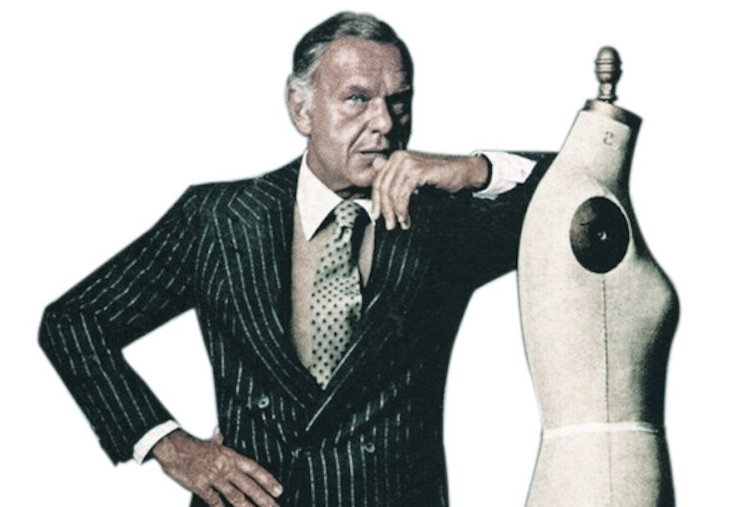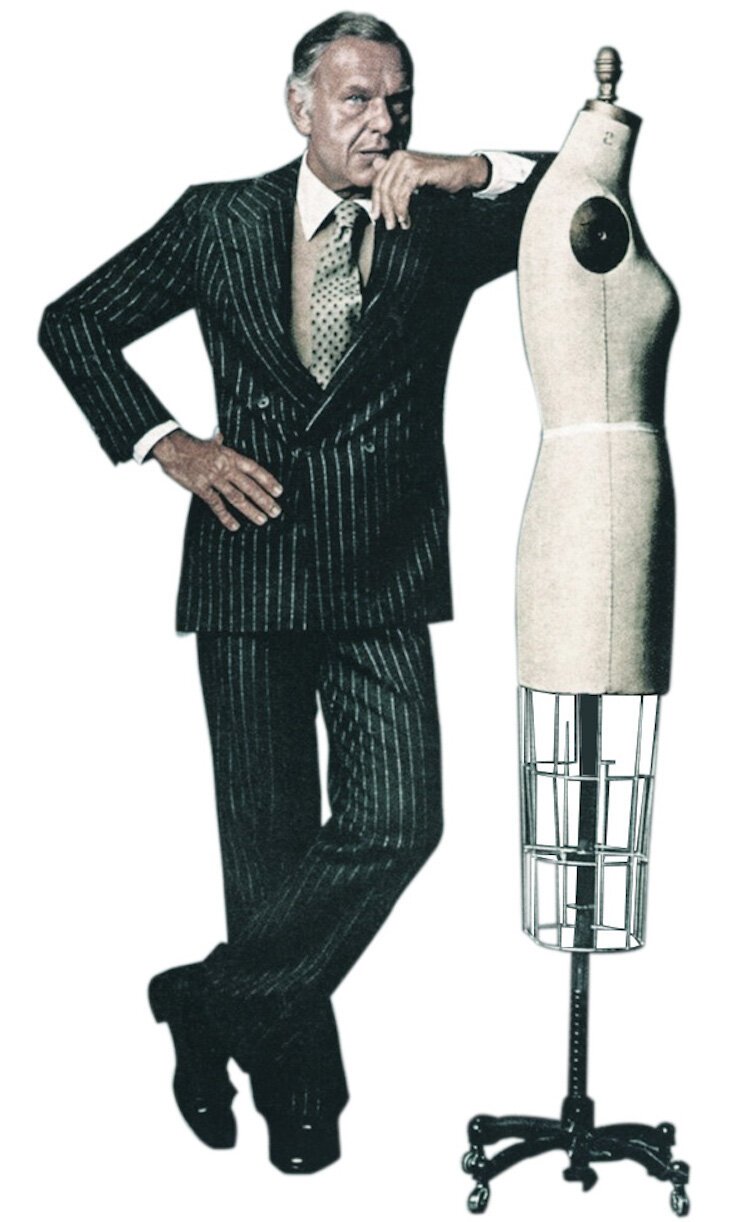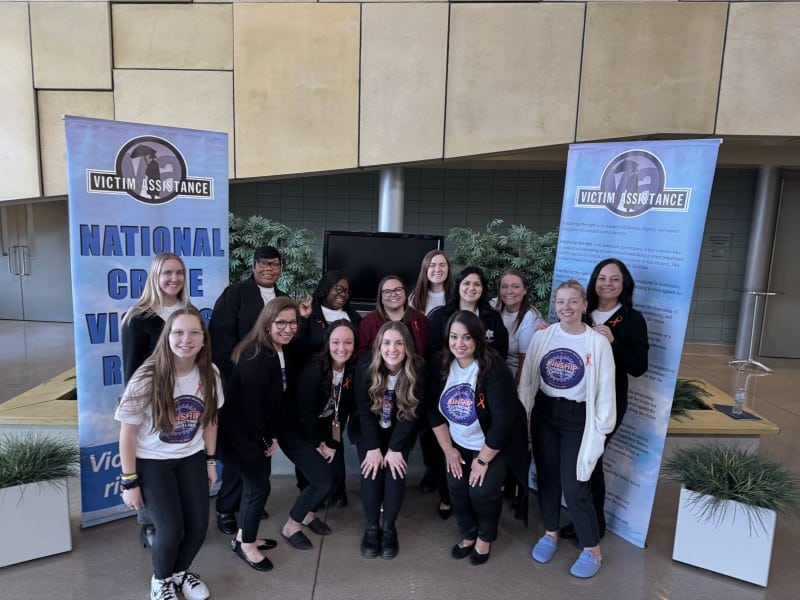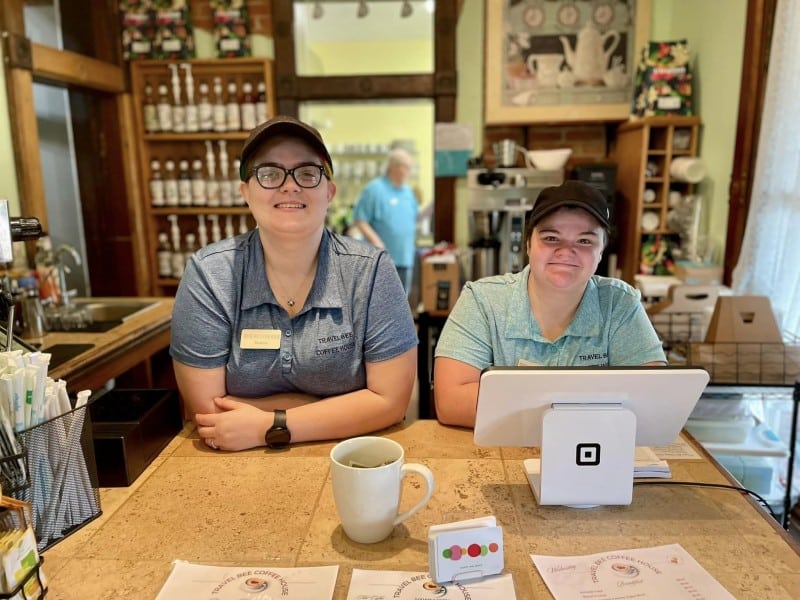How much do you know about Bill Blass? Fort Wayne honors its fashion entrepreneur who beat the odds
Kathy Carrier, Owner/CEO of briljent, shares why she and a group of locals are celebrating 100 Days of Bill Blass—a South Side graduate, a member of the Ghost Army, and a famous fashion designer raised in Fort Wayne.
How much do you know about Bill Blass? That is the question that drove Fort Wayne-raised entrepreneur Kathy Carrier to increase awareness about the famed fashion designer who also hails from the Summit City.
For more than 50 years, starting in the 1950s and 60s, Blass’s designs set the tone for true “American style” and fashion marketing, paving the path for contemporaries, like Calvin Klein, Tommy Hilfiger, and Ralph Lauren. Even so, his legacy is often overlooked in his hometown. As such, Carrier felt that, in honor of what would be Blass’s 100th Birthday on June 22, 2022, it was time to make his name known.
“(Blass) never had children to share his story, so our Centennial Celebration team is honored to do it,” Carrier says.
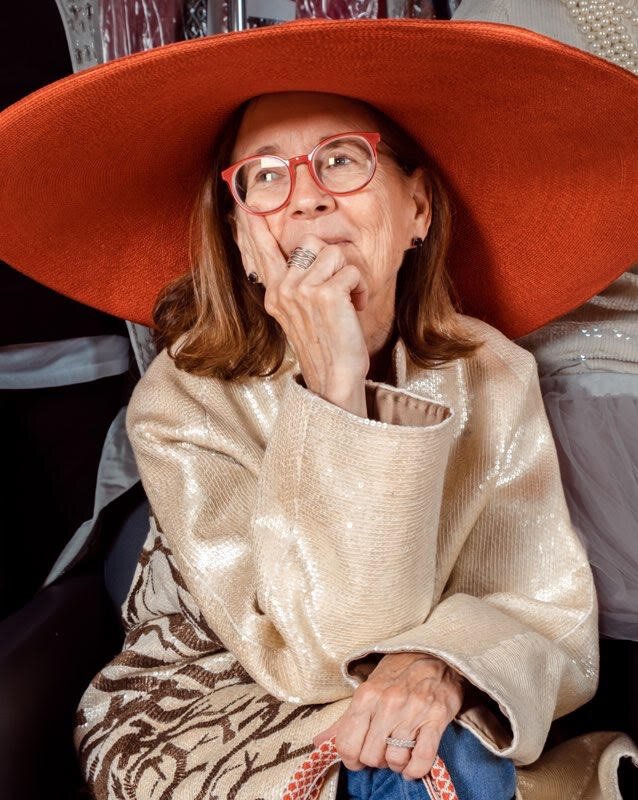
Beginning June 22, she and a team of fellow Blass enthusiasts are hosting 100 Days of Blass-themed events and exhibits at various locations around Fort Wayne, highlighting everything from his time growing up on Fort Wayne’s South side, to his work in the Ghost Army during World War II, and his fashion designs that graced celebrities and Presidents’ wives.
According to his 2002 obituary in the Washington Post, “William Blass was born in Fort Wayne, Ind., the only child of Ralph Blass, the owner of a hardware store, and Ethyl Blass, a dressmaker. Bill Blass played football, worked on the school paper and studied art at South Side High School in Fort Wayne, where he graduated in 1940.”

After high school, Blass moved to New York City to study fashion at the Parsons School of Design and work as a sketch artist. He enlisted in the Army during World War II, where he was a member of the Ghost Army, which conducted elaborate ploys, using inflatable tanks and vehicles, as well as sound trucks and phony radio transmissions, to mislead German forces.
Following the war, Blass returned to New York, where he established his namesake fashion company in 1970. While the impact of his work continues to be far-reaching, his legacy is also personal to Carrier.
“Bill Blass reminds me of my dad, Ski Krzyminski, who was also a successful entrepreneur and WWII hero,” she says.
Input Fort Wayne sat down with Carrier to learn more about what her team has in store for 100 Days of Bill Blass—and what his ongoing legacy means to Fort Wayne.

IFW: Give us a little background on yourself and your interest in Blass.
KC: I am an entrepreneur, born and raised in Fort Wayne. My mom was a big Bill Blass fan. She sewed Bill Blass dresses, using McCalls and Vogue patterns. I didn’t realize until recently that Blass also was born and raised in Fort Wayne. I also had no idea he was in the Ghost Army. In fact, I didn’t even know the Ghost Army existed.
As I asked around, I was shocked that so few people and kids in Fort Wayne knew about Bill Blass. I decided it was time to change that. So I recruited a handful of like-minded friends who were also interested in shining a light on Blass. I am one of eight people on the Bill Blass Celebration team. Our only motive is to be sure his success story is told and preserved.

IFW: For those who don’t know, tell us a little bit about Blass and his relation to Fort Wayne.
KC: Bill Blass was an iconic American fashion designer. He designed high couture fashion for Nancy Reagan, other Presidents’ wives, and many celebrities. He was the first American designer to branch into menswear. He made a fortune by licensing his brand to other products, including the Lincoln Continental, bed linens, chocolates, eyeglasses, and more.
Blass was born in Fort Wayne and was raised in a house on South Calhoun across the street from South Side High School. He had a tough childhood. Growing up poor during the Depression, he was raised by a single mother after his father took his life through suicide in their home. His mother was a dressmaker, who worked out of their home.

IFW: How would you describe Blass’s style and ongoing legacy in the fashion industry?
KC: For this question, I wanted Jenna Gilley, the curator of our two museum exhibits to weigh in. She says: “Blass’ style was classic, elegant, and no-fuss. His lifelong inspirations stemmed from the glamour of the ladies he grew up watching on the silver screen in Fort Wayne, like Marlene Dietrich and Carole Lombard. Practicality was of the utmost importance, as Blass designed for real women across America, not just New York socialites. Because of this, Blass’ “style” is quintessentially American—and I would go even farther to say Midwestern.
“Today, Blass needs to be remembered as one of the main pioneers of American fashion. Most young people under the age of 40 do not know Bill Blass. That’s a real shame, as monumental designers like Calvin Klein, Ralph Lauren, and Tommy Hilfiger would probably not exist today if it weren’t for Blass’ definition of American style. Blass’ mastery of not only fashion, but business is something that has now become a staple of any successful designer name—just think of all the branded Gucci and Fendi merchandise! At the start of his career, this was certainly revolutionary.”

IFW: When you think of fashion capitals in the U.S., Fort Wayne doesn’t necessarily come to mind. But what about Blass and his work should make Fort Wayne proud?
KC: I am proud that he persevered through the Depression, his Ghost Army work in WWII, and through decades of tough competition in the fashion world. He was a determined man. He sold his dress sketches to a New York manufacturer when he was just 15, during the Depression. He created the logo for his business while in Normandy in WWII. He designed and produced thousands of complicated, amazing dresses. I saw 1,500 of them in the Bill Blass archive in New York a few months ago. He wasn’t making any money from his high-end fashion, so he created a classy everyday wear line called Blassport. He licensed his brand and then finally hit paydirt. That is a lot of “never give up.” I honestly can’t think of another entrepreneur and military hero of this stature who hails from Fort Wayne.
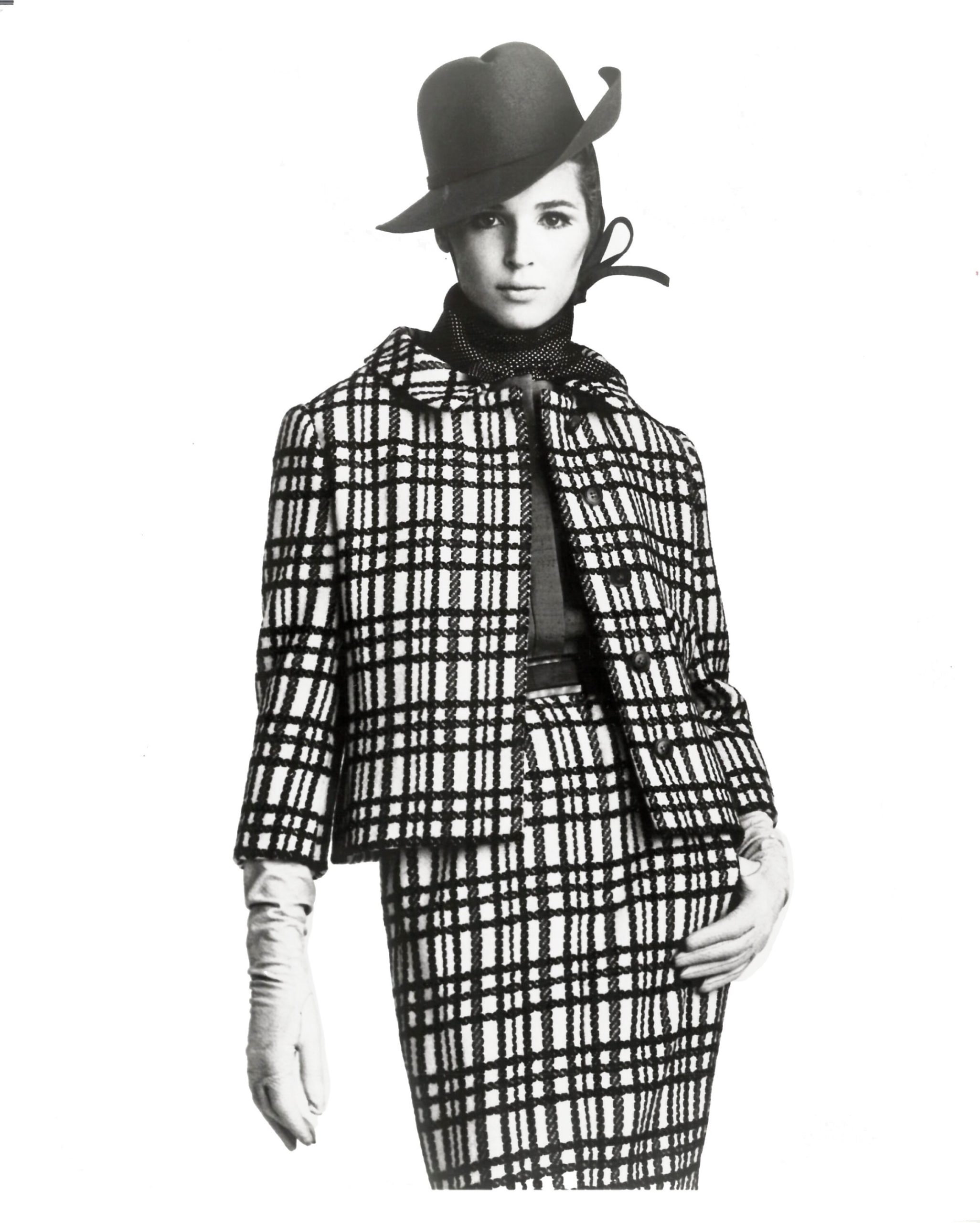
IFW: Blass (1922-2002) graduated from South Side High School in Fort Wayne. He and South Side both turn 100 this year. Tell us about some of the projects South Side students have done to honor and carry forth his legacy.
KC: When we reached out to see if any of the teachers would be interested in joining the Blass Celebration, we never expected the enthusiastic response we got. Under the leadership of art teacher Jennifer Slone and history teacher Jon Baker at South Side, a multifaceted project called “Walk in Our Shoes” was launched last school year. So far, it includes podcast interviews with students, a chalk walk of 110 designer shoes leading from South Side’s front door to Blass’s house, a series of 6-word creative writing memoirs with Polaroid pictures, and a “Walk a Mile in My Shoes” event, where staff and students participate in a 100-mile challenge together, sharing stories as they walk.
All of this came together so quickly. Three cheers for South Side! More is planned when school resumes in the fall, including a focus on The Ghost Army of World War II with author Rick Beyer.

IFW: Tell us about other people, organizations, and events that are part of the ongoing festivities as part of 100 Days of Bill Blass.
KC: There is certain kismet and serendipity happening with this celebration. Every week or two, something significant occurs to tie a person or group into the project in a surprising way. We’ve been working closely with three museums to host detailed Blass exhibits: The Veterans National Memorial Shrine and Museum, the Fort Wayne Museum of Art, and the History Center. Curt Witcher and his team have created the Bill Blass Archive at the Allen County Public Library. Allen County Commissioner Nelson Peters worked closely with the County to name The Bill Blass Bridge. Artist Greg Mendez and Arts United worked with us to install Blass-inspired metal outdoor sculptures. Bob Thomas of the local Lincoln dealership will display a 1979 and 1982 Lincoln that Blass designed in his showroom. We’ve had support from the Lake James community (where Blass’s family had a home) and the wonderful woman who lives in the house Bill Blass grew up in. The Fort Wayne Philharmonic is featuring Blass at its July 3 Pops concert. The owner of Oh Five Scoop Shop is excited about our Blassport ice cream giveaway.
Bill Blass’s family and friends from across the country have called, shared stories, and donated Blass items to our legacy project. We have visiting dignitaries and speakers who knew Blass, too.
The Cinema Center, South Side High School, and Visit Fort Wayne are alive, awake, and enthusiastic about Bill Blass. Finally, there will be a community-wide “Where’s Bill” contest in August. Stay tuned for the details!
For someone who wasn’t on our radar, he sure is now.
IFW: Where can we keep up with your events and updates?
KC: We have all of our events on our Facebook page.
Visit Fort Wayne is also publishing a Blasstastic map that shows the location of the many activities that will occur over the 100-day celebration. All of this will be digitally archived at the Allen County Public Library, so the life of Bill Blass is recorded.
We are also planning a permanent museum trunk show as a lasting legacy to our community.

